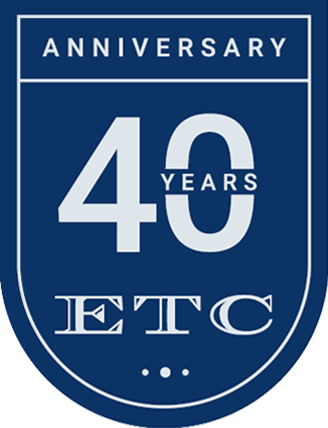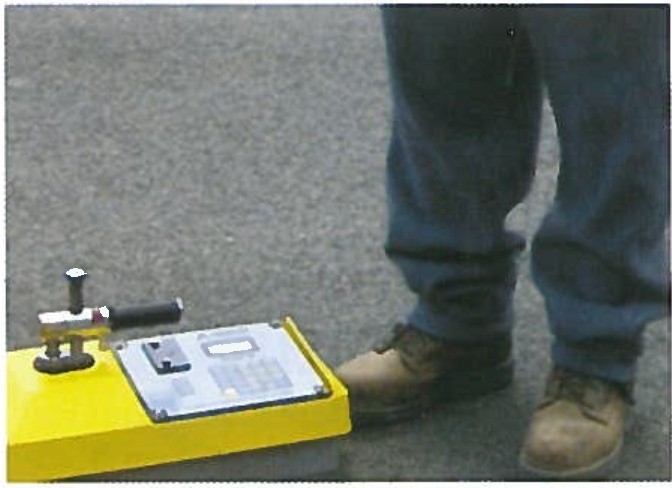Blog
View All Blog Postings
Damn Ice!…oh, I mean Ice Dams
 As I write this blog this morning, I am looking out at the parking lot and roofs with snow and ice accumulation. This yet again reminds me of last winter and the HUGE amounts of snow our area experienced and I am thankful that we have not seen those snow totals so far this year.
As I write this blog this morning, I am looking out at the parking lot and roofs with snow and ice accumulation. This yet again reminds me of last winter and the HUGE amounts of snow our area experienced and I am thankful that we have not seen those snow totals so far this year.
It also reminds me of the ice damming issues that many buildings experience during heavy snows. Ice damming occurs along edges of sloped roofs and is normally related to the repeated warming of the rooftop snow and the refreezing of the ice along the unheated eave area of the roof edge. This ice formulation can result in water penetration below these areas. Listed below are some things to do to help reduce ice damming.
- Keep gutters and downspouts clear and operational.
- Ensure that the insulation along the attic floor is uniform and evenly distributed. If insufficient, add additional insulation.
- Make sure that attic vents (in the soffits, along ridges and in gable walls) are clear and free of obstruction.
- Make sure that dryer and exhaust vents are extended to the exterior and not into the attic.
- Incorporate eave flashings during roof replacement projects.
We certainly cannot control Mother Nature and her tendencies, but with some upfront checking and relatively minimal work, we can help control the affects of her rath.
The Importance of Welder Certification
We have come across some really poor quality welds recently, which were performed by companies claiming to use qualified welders. We do not know if the welders just  had a bad day or they were not certified for the welds being performed. This highlights the need to use American Welding Society (AWS) Certified Welders with currently active credentials. To become certified, the welder must pass a welding test for all of the welds he intends to perform. Just because a welder passes a test to weld plates together does not mean he can weld pipes. So you need to look at their certifications closely. Additionally, AWS requires that every six months the “welder” submit proof that they are still actively engaged in welding. AWS issues a certification card and your weld should be able to provide an AWS form that shows all the welds that he is qualified to make. For more information visit the AWS website http://www.aws.org/certification/CW/
had a bad day or they were not certified for the welds being performed. This highlights the need to use American Welding Society (AWS) Certified Welders with currently active credentials. To become certified, the welder must pass a welding test for all of the welds he intends to perform. Just because a welder passes a test to weld plates together does not mean he can weld pipes. So you need to look at their certifications closely. Additionally, AWS requires that every six months the “welder” submit proof that they are still actively engaged in welding. AWS issues a certification card and your weld should be able to provide an AWS form that shows all the welds that he is qualified to make. For more information visit the AWS website http://www.aws.org/certification/CW/
Getting To Know The ETC Team #18
Alex Goldberg | Project Inspector
10 Things You Didn’t Know About Me….
1. I worked as a residential carpenter, building additions, basements, bathrooms, and kitchens from start to finish for 11 years before joining the ETC team.
2. Music is a big part of my life. I’m currently the rhythm guitarist and backup singer in a bar band that gigs several times a month.
3. I went skydiving this spring for the first time, and it may be one of the most amazing things I have ever done.
4. I recently started riding motorcycles, thanks to a long line of riders in my family.
5. I considered going to college to be a chef, then realized the long hours and hot kitchens weren’t for me. I now cook for enjoyment.
6. People may think that internet dating is a little strange, but that is how I met my wife. We’ve been married almost four years, and together almost eight.
7. When I was younger, I had several piercings that I wore on a regular basis. I had two earrings in each ear and a labret which was a stud between my lower lip and my chin.
8. One of my long term goals in life is to be a contestant on Jeopardy. Don’t know if I will ever make it, but I will keep taking the online test and hoping.
9. In high school, I was on the track and field team for three years, pole vaulting for two and throwing javelin for one. Turns out I was too short to be competitive in hurdles.
10. I currently have two cats, Keenan and Kira, and also hope to get a dog. I’ve had pets (cats, dogs, birds, hamsters, gerbils) my entire life and can’t imagine how quiet it would be without them.
Timber Retaining Walls
 Preservative (pressure) treated wood is among the most common materials used in the construction of retaining walls. Ground-contact rated is standard for that use, but a GC label doesn’t tell the entire story. The important factor is preservative retention – the amount of chemical that remains in the wood after treatment, usually expressed as pounds per cubic foot or PCF. Optimum levels vary with the chemicals used and some products considered suitable for ground contact have retention levels that are less than desirable for retaining walls.
Preservative (pressure) treated wood is among the most common materials used in the construction of retaining walls. Ground-contact rated is standard for that use, but a GC label doesn’t tell the entire story. The important factor is preservative retention – the amount of chemical that remains in the wood after treatment, usually expressed as pounds per cubic foot or PCF. Optimum levels vary with the chemicals used and some products considered suitable for ground contact have retention levels that are less than desirable for retaining walls.
The American Wood Protection Association (AWPA) lists three categories for ground contact use, General Use (UC4A), Heavy Duty (UC4B) and Extreme Duty (UC4C). Heavy Duty protection would be suitable for most circumstances. Extreme Duty would be appropriate in such locations as freshwater lake or pond side walls. AWPA has separate categories for use in marine (saltwater) environments.
The timbers most used in retaining walls measure six by six or eight by eight inches in cross section and full preservative saturation is difficult to achieve in material that thick. Consequently, the central portions are less protected and decay (rot) can occur deep within the wood before there’s any visible evidence of distress. So-called Ground-Contact-rated, forty-year timbers can experience advanced deterioration within as few as fifteen years, while appearing sound.
In order to truly evaluate timber retaining walls it’s often necessary to sample the material by extracting full-depth cores with a specialty bit. Usually, a simple visual examination is sufficient to determine the level of degradation. Sounding (with a hammer) can reveal advanced decay. Rot reduces wood to dust, which will produce a hollow sound if sufficient wood has been compromised.
There are factors apart from chemistry that can play into the performance of preservative-treated wood, including the position of the wood within the tree from which it was obtained. Preservatives tend to penetrate sapwood easier than heartwood. Species that contain more sapwood (such as Southern Pine) predominate in the industry. Other species (such as Douglas Fir) that have more heartwood are also used, but they require different processes, usually in the form of ammonia-based carriers. While ammonia has better penetration characteristics, it’s also more corrosive to metal fasteners and fixtures.
Treatment chemical will inevitably leach out of wood and the speed of that process is governed by water. A proper drainage system consisting of a vertical drainage course (such as gravel) collection devices (such as perforated pipes) and discharge features (weep holes) will help slow the loss.
Retaining wall construction is typically a complex and expensive undertaking, but the cost difference between merely acceptable and superior products is relatively small. Retain the services of a professional to design your wall and specify the best materials. Your good judgment will be rewarded.
You Want Us To Inspect What?!
 In another example of ETC boldly going where not many have gone (or would go) before, Luke Valentine from our office recently completed assessments of several underground storm water management structures. He visually inspected thousands of feet of buried corrugated steel pipe, and located defects such as fully corroded pipe walls, crushed pipe sections, and damaged joints. He then provided solutions for the repairs. It's a creepy and dirty job to walk (or crawl) in the dark through partially mud or water-filled pipes, but our client needed it done to satisfy the County authorities and ETC was up to the challenge.
In another example of ETC boldly going where not many have gone (or would go) before, Luke Valentine from our office recently completed assessments of several underground storm water management structures. He visually inspected thousands of feet of buried corrugated steel pipe, and located defects such as fully corroded pipe walls, crushed pipe sections, and damaged joints. He then provided solutions for the repairs. It's a creepy and dirty job to walk (or crawl) in the dark through partially mud or water-filled pipes, but our client needed it done to satisfy the County authorities and ETC was up to the challenge.
Pole It Together!
Do you have light poles on your property that look like this? We know of some poles that have fallen during storms.  Why risk possible property damage or a life safety condition? Not all defects are this obvious. We can inspect light/utility poles for corrosion lurking inside that may not manifest until one smashes the roof of the only Rolls Royce in the lot.
Why risk possible property damage or a life safety condition? Not all defects are this obvious. We can inspect light/utility poles for corrosion lurking inside that may not manifest until one smashes the roof of the only Rolls Royce in the lot.
WMCAI Golf Outing

Thanks to CAI for a great networking afternoon. We look forward to seeing everyone again next year!
Pavement Seal Coats

The most common alternatives to coal tar are polymer-modified asphaltic products, purported to be comparable to coal tar with respect to cost and performance. New formulations reach the market with regularity, but as with any new product, long-term performance is uncertain.
Another possible alternative to seal coating could be application of a pavement “rejuvenator”. Rejuvenators will not, as the term implies, counteract aging or restore pavement to new condition. These product typically penetrate to depths measured in fractions of an inch, but that’s enough to help reverse surface oxidation and the affected layer does present a barrier to water.
Similar to seal coats, their effectiveness is affected by pavement condition, but they are more forgiving with respect to weathering and surface wear. They also form a chemical bond with the asphalt constituents, whereas seal coats rely on surface adhesion.
Application costs tend to be higher for rejuvenators than for asphaltic seal coats, but not dramatically so. Rejuvenators will not repair distressed pavement, but they could be a viable alternative to conventional seal coating.
Getting To Know The ETC Team #17

10 Things You Didn't Know About Me….
1. In August of 2011, I competed in my first Strong Man Competition and placed 2nd in my division.
2. I have never owned a car, only trucks and SUVs’ (4 wheel drive of course).
3. My current vehicle is a Toyota Tacoma and has 395,000 miles on it. I bought it new in 2003.
4. I married my high school sweetheart 10 years ago. We are still very happily married with two kids.
5. I enjoy classic country music, but will listen to just about anything.
6. I don’t drink coffee, however I do get my morning dose of caffeine from a sugar-free Red Bull.
7. I enjoy riding motorcycles on the street and track. I’ve been riding street bikes since I was 16 and dirt bikes/atv’s since the age of 6.
8. I cut my own hair.
9. Out of my 3 brothers (2 older and one younger) and only sister, I’m the only one that’s married and has kids.
10. I attended a private Christian Academy for my middle school years.
The Importance of GPR Testing

We took this photo recently while on a project. It shows a reinforcement bar that was partially cut by a core drill when a plaza drain was being installed and highlights the reason that all slabs should be scanned with a Ground Penetrating Radar (GPR) before drilling.
A GPR can locate embedded steel reinforcement and allow you to miss the bars. Cutting rebar or tendons can compromise the load carrying capacity of the structure. Cutting into other embedded items (such as conduits for electrical service or communication lines)could disrupt building operations or even be hazardous.
Call ETC for all of your GPR needs and we will bring our 3D machine out to make sure you do not damage your building.
Getting To Know The ETC Team #16

10 Things You Didn’t Know About Me.
1. I’ve never once been intoxicated. I like to remember what happened the night before and I usually have some funny stories to share with others.
2. Prior to starting with ETC, I worked as a finish carpenter. I have a well equipped woodworking shop and love making things. I would probably be a furniture maker if I didn’t hate sanding and staining so much.
3. When I was younger, I would eat insects to earn extra money. Did I say I was MUCH younger?
4. I once placed 2nd in a beauty pageant. If the other contestant hadn’t played it up for the judges by blowing kisses and holding stupid teddy bears, I’m sure I would have won. (I was robbed!)
5. I briefly played guitar in a rock band (Shoji) during high school. We came in 2nd place in the school talent show. Not bad except there were only two bands competing.
6. One year I spent weekends helping an ex-girlfriend capture and tag wild field mice as part of her college thesis. I never got over her method of tagging the mice…don’t ask!
7. I enjoy motorcycles and most think I’m a talented rider. However, the truth is I can’t ride a decent wheelie (yet) and I’ve dumped every dirt bike I’ve ridden.
8. I don’t understand why anybody would want to go up in a hot air balloon. The concept of floating in a flammable object, operated by an open flame, several hundred feet above the ground, is just idiotic!
9. I have two large aquariums and a goldfish pond. I even have a catfish (Striped Raphael) that has been with me since high school….he’s over 20 years old!
10. Although not as proficient as I used to be, I love shooting, especially sporting clays. When a prize is on the line, I rarely miss
Rise Of The Machines

http://inhabitat.com/amazing-ero-concrete-recycling-robot-can-erase-entire-buildings/




